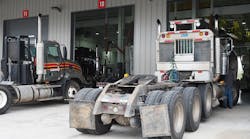What does PM really mean? In some cases it means lights out, afternoon, or even after dark — as in post-meridian. But in other cases, "PM" is surrounded by a lack of understanding at a moment in time.
It is clear that PM has different meanings to each person responsible for managing or performing the preventive maintenance process. Therefore, PMs can have a variety of definitions, such as:
1. Preventive Maintenance Service: The act of inspection and repair of equipment. Inspect and determine what needs to be repaired. That could mean fixing everything in sight and whatever you touch, meaning the checkbook could be in the hands of the technicians.
2. Planned Money Spent: This is where you plan on what you’re going to be spending during the PM. How many hours and/or minutes? This is better known as making the budget. The maintenance technology, as "plan A" and "plan B", would determine what managed repairs should be performed following the PM inspection. This, in turn, leads to number three.
3. Procrastination Maintenance Science: This is where there is "managed procrastination" maintenance, making those repair choices only when necessary, meaning can we get to the next PM and maximize the potential life of tires, brakes and other components (never compromising safety of course). One must determine who will make those decisions — the mechanic, technician, lead man, shop management. All will have an opinion, but all need to be on the same page. I am not inferring that employees are not capable of decision-making, but all will have personal choices in repairs an opposed to necessary compromise of business and mechanical decisions. We tend to use the term "budget" as a management tactic. The question is, what page do we need to be on for max life, lowest cost, and maximum uptime?
So which definition is correct? Not one of the styles alone of the above PM management works; in fact, you need a combination of all of them.
You need quality and consistent inspections. After the inspection is performed and the necessary repairs determined, you then need to decide how to plan to spend the money for parts and labor. That is where "procrastination maintenance" comes in, determining if the opinion of the repairs or replacement parts you find can go to the next PM. Always keep in mind safety and operational objectives.
Here is a suggestion: inspect the piece of equipment, determine the necessity of the repair and minimize downtime between PMs. The goal is to get from PM to PM without a shop visit. Good luck — but that's the goal!



